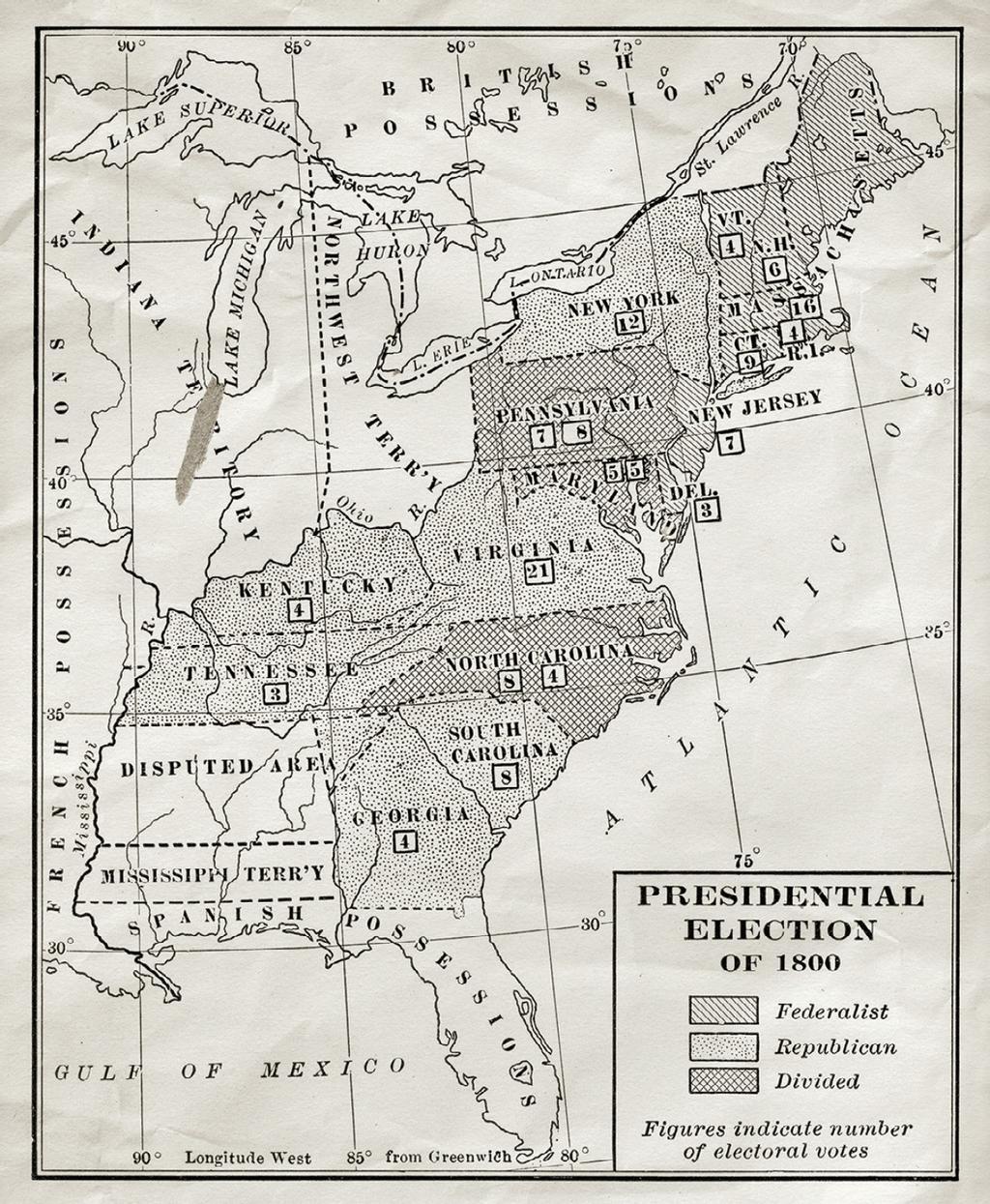Explosive Election

Among pivotal American episodes, the 1800 election occupies a central place. That race, labeled by Thomas Jefferson “the Revolution of 1800,” introduced to the world the modern political campaign as well as the peaceful transfer of power in a nation-state. Fittingly, that campaign’s key figures—Jefferson, Alexander Hamilton, John Adams, and Aaron Burr—were larger than life. Jefferson, having served as Adams’s vice president since 1797, was challenging the incumbent for the presidency. The contest brought intense scrutiny to bear on the 1787 Constitutional Convention’s choice of how to select a chief executive. The result was less than ideal.
Debating extensively in 1787 about how to choose a president, virtually no delegates to the Constitutional Convention had supported the notion of having the people vote directly. Delegates decided to trust the choice of leader to a group of electors, men of stature to be chosen for this role in a manner decided by each state’s legislature.
This raised the issue of how many electors each state should field. Accustomed to the great sway that was accorded all states by the Articles of Confederation, smaller states feared a system that parceled out power according to population would cost them influence and protection. Hence the Convention’s decision that each state’s electors would equal in number the state’s representation in Congress—House membership plus two. Each elector was to vote for two individuals for president, at least one of those from a state other than the elector’s. The candidate receiving the majority of electoral votes would be president; whoever received the next highest number of electoral votes would be vice president. Electors had no means of distinguishing which choice they preferred for president and which for vice president.

An option was required should no candidate get a majority. While the delegates all expected George Washington to win by huge majorities—and in 1788 and 1792, he uniquely received every elector’s vote—they anticipated that normally no candidate would amass a majority. The solution that the Constitutional Convention embraced to address the absence of a majority
You’re reading a preview, subscribe to read more.
Start your free 30 days





